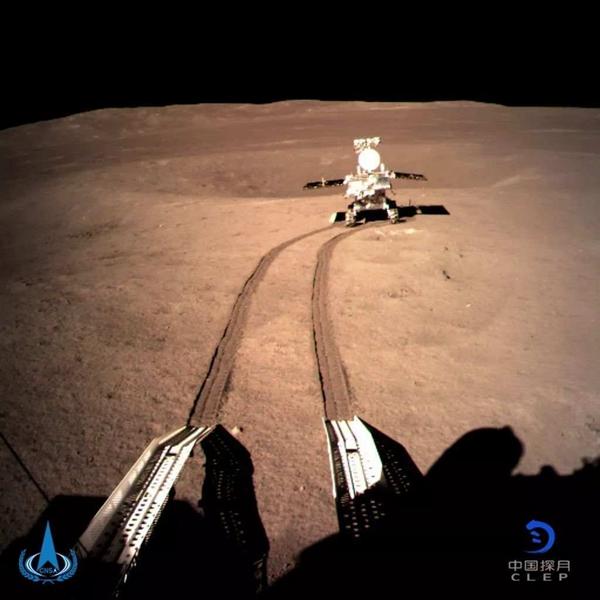News Center
3 scientists win World Space Award for lunar mission
June 20, 2020

The Chang'e 4 robotic probe. [Photo/clep.org.cn]
Three Chinese space scientists involved in the nation's Chang'e 4 lunar exploration mission have been given the World Space Award, the highest award of the International Astronautical Federation, according to a Chinese space authority.
The Lunar Exploration and Space Program Center under the China National Space Administration announced on Thursday that after two rounds of voting, the IAF decided to confer the 2020 IAF World Space Award to Wu Weiren, chief designer of China's Chang'e lunar programs and academician of the Chinese Academy of Engineering; Yu Dengyun, deputy chief designer of Chang'e programs and deputy director of science and technology at China Aerospace Science and Technology Corp; and Sun Zezhou, chief designer of the Chang'e 4 probe and a top researcher at the China Academy of Space Technology.
This is the first time the international organization has given the award to Chinese scientists, the center said in a statement.
According to the IAF, the World Space Award is presented for an outstanding contribution or contributions in space science, space technology, space medicine, space law or space management of exceptional impact to the world's progress in astronautics.
This award is given once per year and only when nominations of world-class outstanding merit are received.
It is preferably granted to a single person but may be awarded to two or more people if there was a joint effort in the contribution, the federation explained.
The Chang'e 4 robotic probe, which consists of an unmovable lander and the Yutu 2 rover, was lifted atop a Long March 3B rocket in December 2018 at the Xichang Satellite Launch Center in Sichuan province, marking the country's fourth lunar exploration and the world's first expedition to the far side of the moon, which never faces Earth.
The probe made a soft landing on the far side on Jan 3 and then released the Yutu 2 to roam and survey the landing site in the South Pole-Aitken basin, the largest and deepest known basin in the solar system.
Currently, the lander and the rover are in their 18th lunar-night dormancy session. The Yutu 2 has traveled nearly 448 meters on the lunar soil.
The scientific tasks of the Chang'e 4 mission include low-frequency radio astronomical observation and surveying the terrain and landforms around the landing site. As no probe had ever landed on the far side before Chang'e 4, all scientific information obtained during the mission would be new to the world.
China's next lunar probe, Chang'e 5, will weigh about 8.2 metric tons and will be the largest and heaviest lunar probe ever built by the country. It will consist of four components-an orbiter, a lander, an ascender and a re-entry module.
